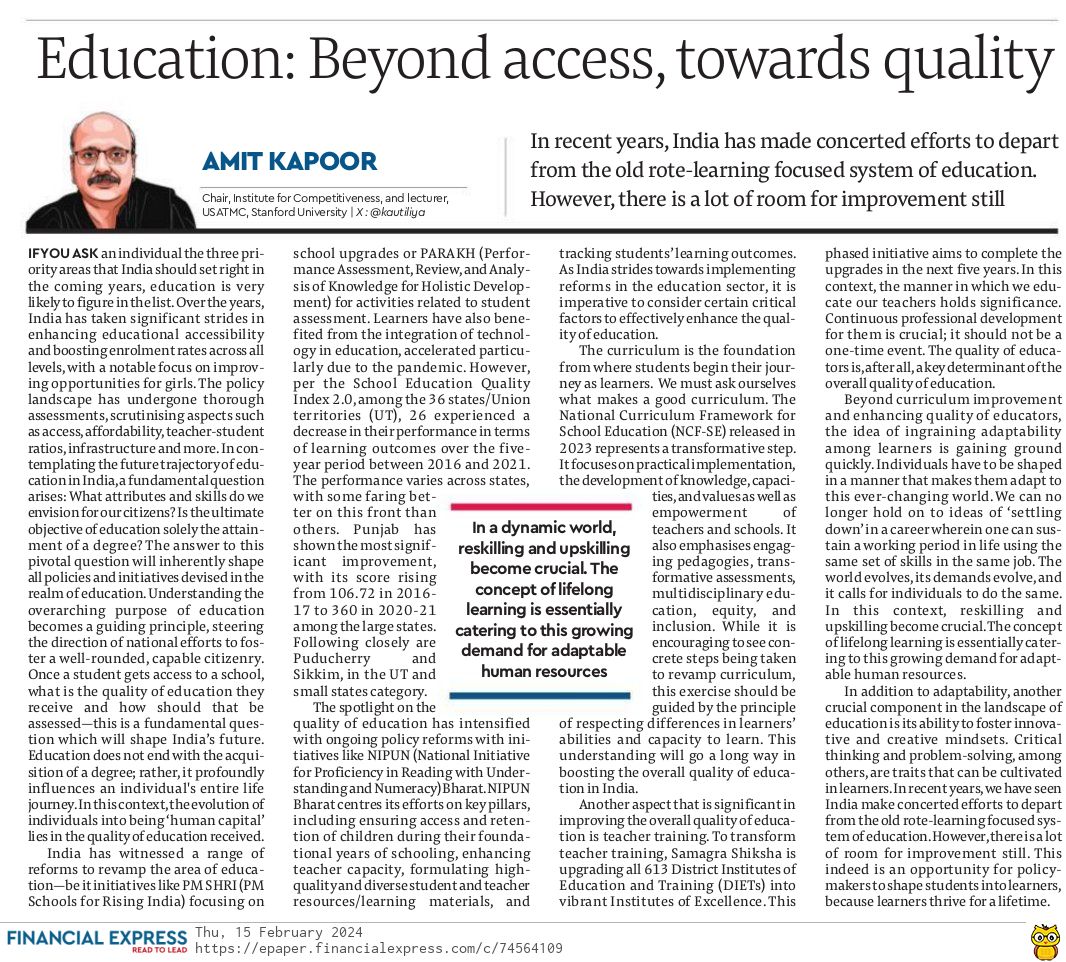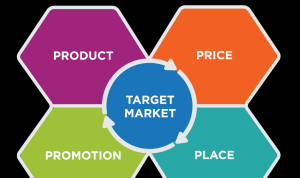How to Improve Access to Quality Education Globally is a pressing concern that demands our attention. With millions of children around the world still lacking basic educational opportunities, it is essential to explore innovative strategies that can bridge the gap in education access. This opening discussion will delve into the current state of global education, the barriers faced by many, and the importance of providing quality education to foster equitable opportunities for all.
Education is a vital tool for personal and societal growth, and understanding the nuances of access and quality can pave the way for transformative changes. From examining statistics that highlight disparities to identifying effective policies and community initiatives, we will uncover the multifaceted approach needed to ensure every learner can thrive.
Global Access to Education
Access to quality education remains a critical issue worldwide, with significant disparities evident in different regions. Education is not just a fundamental human right; it is a powerful tool for social and economic development. However, the current state of education access reveals a troubling reality, where millions of children and adults are still deprived of the opportunity to learn and grow.The barriers to education are varied and complex, influenced by socio-economic, political, and cultural factors.
In many low-income countries, inadequate infrastructure, lack of trained teachers, and insufficient resources hinder educational progress. Conflict and displacement further exacerbate these challenges, leaving vulnerable populations without access to schooling. According to UNESCO, around 263 million children and youth are out of school globally, highlighting a significant challenge in achieving universal education.
Barriers to Education Access
Understanding the obstacles to education is essential for developing effective strategies to improve access. The following points illustrate some of the main barriers faced across different regions:
- Poverty: Families living in poverty often prioritize immediate survival over education, leading to high dropout rates and low enrollment.
- Conflict Zones: Areas affected by war or political instability frequently see schools destroyed or repurposed, and families fleeing violence have limited educational opportunities.
- Gender Inequality: In many cultures, girls face significant barriers to education, including early marriage, cultural norms, and safety concerns.
- Lack of Infrastructure: Many regions lack the basic facilities required for education, such as schools, textbooks, and transportation, particularly in rural areas.
- Health Issues: Health crises, including epidemics and malnutrition, can significantly affect children’s ability to attend and succeed in school.
Data from the Global Partnership for Education shows that children from the poorest households are four times more likely to be out of school than their wealthier peers. This disparity underscores the urgent need for targeted interventions that address the root causes of educational inequity.
“Education is the most powerful weapon which you can use to change the world.” – Nelson Mandela
Additionally, regional statistics reveal stark differences in access to education. Sub-Saharan Africa has the highest number of out-of-school children, with approximately 80 million children and adolescents not attending school. In contrast, many developed nations have nearly universal enrollment rates, yet still face challenges in educational quality and equity.Addressing these barriers requires a collaborative effort among governments, non-profits, and communities to create inclusive educational systems that cater to the needs of all learners, particularly those who are marginalized.
Ensuring that every individual has access to quality education is essential for fostering a more equitable and prosperous global society.
Quality of Education
Quality education is a multifaceted concept that encompasses various elements aimed at fostering learning environments where students can thrive. It is essential for personal and societal development, as it not only provides knowledge but also equips learners with critical thinking skills, creativity, and the ability to engage effectively within their communities. The importance of quality education lies in its capacity to break the cycle of poverty, promote equality, and empower individuals to realize their full potential.Assessing the quality of educational institutions involves multiple methodologies that provide insights into their effectiveness.
Various indicators can be measured, including teaching quality, curriculum relevance, student support services, and institutional leadership. These evaluation methods can take the form of national assessments, standardized tests, and surveys that gather feedback from students, teachers, and parents.
Methods for Assessing Educational Quality
The quality of educational institutions can be evaluated through several reliable methods that highlight both strengths and areas for improvement. These methods not only provide data but also guide policymakers in making informed decisions.
- Standardized Testing: Objective assessments such as national exams help measure student knowledge against set benchmarks, providing a clear picture of achievement levels.
- Accreditation: Institutions undergo rigorous evaluations by recognized accrediting bodies, ensuring they meet specific educational standards.
- Surveys and Feedback: Gathering input from students, parents, and educators through surveys can reveal insights into the perceived quality of education and areas needing attention.
- Educational Outcomes: Tracking graduation rates, college enrollment, and employment statistics can indicate the effectiveness of educational programs.
- Classroom Observations: In-person evaluations of teaching practices help assess instructional quality and engagement levels among students.
Establishing a robust connection between educational quality and student outcomes is crucial, as it demonstrates the tangible impact that quality education has on learners’ lives. Quality education leads to higher engagement and retention rates, ultimately yielding improved academic performance and life skills.
Relationship Between Educational Quality and Student Outcomes
The interplay between the quality of education and student outcomes is well-documented and illustrates a direct link to success in both academic and personal realms. Quality education fosters an environment conducive to learning and development.
- Higher Academic Achievement: Research consistently shows that students in high-quality educational settings perform better on tests and assessments, leading to higher grades and graduation rates.
- Enhanced Critical Thinking Skills: Quality education emphasizes critical thinking and problem-solving, enabling students to navigate complex issues effectively.
- Increased Motivation: Engaging and relevant curricula inspire students, resulting in a greater desire to learn and participate in academic challenges.
- Long-term Success: Access to quality education correlates with improved employment opportunities and higher earning potential, demonstrating its importance in breaking socioeconomic barriers.
- Social and Emotional Development: Quality institutions often focus on developing social skills and emotional resilience, contributing to well-rounded individuals ready to face societal challenges.
“Quality education is not just about imparting knowledge; it’s about preparing students for life.”
Innovative Solutions for Improving Access
To tackle the ongoing challenges of educational access globally, innovative solutions leveraging technology can play a transformative role. These solutions not only address physical barriers to education but also enhance the overall quality of learning experiences. By harnessing technology, we can create inclusive systems that cater to diverse learning needs and environments.One particularly effective approach involves designing programs that utilize technology to improve educational access.
This can include the implementation of digital platforms that offer resources, interactive learning experiences, and connectivity for teachers and students. Such platforms can bridge gaps in under-resourced areas and provide equal opportunities for learners regardless of their geographical location or socio-economic status.
Examples of Successful Initiatives
Numerous countries have successfully implemented initiatives to enhance access to education through technology. These initiatives demonstrate the versatility and impact of educational technology on diverse populations.
- Kenya’s M-PESA: This mobile payment system has been adapted to facilitate school fee payments, allowing parents to pay fees conveniently via their mobile phones. This innovation has significantly increased school enrollment rates.
- India’s SWAYAM: A massive open online course (MOOC) platform offering free courses from top universities in India. This initiative provides learners access to quality education and resources that might otherwise be unavailable in their localities.
- Chile’s Enlaces Program: A government initiative that integrates technology in classrooms, providing schools with digital tools and internet access. This program has improved teaching methodologies and expanded students’ learning experiences.
- South Korea’s Digital Textbooks: The country has adopted digital textbooks in its national curriculum, allowing students to access interactive content and multimedia resources that enhance their learning.
These successful examples illustrate how technology can break down barriers to education, enabling students to learn in more flexible and engaging ways.
Potential of Mobile Learning and Online Courses
Mobile learning and online courses have revolutionized the educational landscape, making learning more accessible than ever. The rise of smartphones and widespread internet access has led to an increase in mobile learning applications that cater to various educational needs.Mobile learning allows students to engage with educational materials anytime and anywhere, which is particularly beneficial for those in remote or underserved regions.
This flexibility fosters a more personalized learning experience that accommodates individual schedules and learning paces. Online courses further democratize education by providing access to high-quality content from esteemed institutions without the constraints of physical classrooms. The potential of these courses is evident in the growing popularity of platforms like Coursera and edX, which offer courses from top universities globally, allowing learners to gain knowledge and skills relevant to their career aspirations.
“Education is the most powerful weapon which you can use to change the world.” – Nelson Mandela
In summary, leveraging technology through innovative programs and initiatives plays a crucial role in enhancing access to quality education globally. The potential of mobile learning and online courses is vast, and as these technologies continue to evolve, they will undoubtedly shape the future of education for generations to come.
Role of Governments and Policy Makers
Governments and policymakers play a pivotal role in shaping the landscape of education access and quality. Their decisions have far-reaching implications that can either bridge the gaps in educational equity or exacerbate existing challenges. By implementing targeted strategies and policies, they can create an environment where quality education is accessible to all, regardless of socio-economic status or geographic location.To enhance access to education, governments can adopt a multifaceted approach that addresses the various barriers students face.
This includes financial, geographical, and cultural obstacles that hinder enrollment and retention rates in educational institutions. By ensuring equitable resource allocation and promoting inclusive practices, governments can significantly improve the educational landscape.
Strategies for Improving Education Access
Several effective strategies can be implemented by governments to improve education access. These strategies hinge on understanding the unique needs of diverse populations and tailoring solutions accordingly.
- Investment in Infrastructure: Developing and maintaining school facilities, especially in rural and underserved areas, is crucial. This includes providing safe, accessible buildings and necessary learning materials.
- Financial Aid Programs: Introducing scholarships, grants, and subsidized loans can alleviate the financial burden on families, encouraging higher enrollment rates.
- Community Engagement Initiatives: Involving parents and local communities in educational planning fosters a more inclusive approach, ensuring that educational programs meet local needs.
- Flexible Learning Options: Offering online courses, evening classes, and alternative scheduling can accommodate students who may have work or family commitments.
Effective Policies for Enhancing Educational Quality
Policymakers can adopt various policies that have proven effective in enhancing the quality of education. These policies should focus on improving teaching standards, curriculum relevance, and student support systems.
- Teacher Training Programs: Continuous professional development for educators ensures they are equipped with the latest teaching methodologies and subject knowledge.
- Curriculum Revisions: Regular updates to the curriculum to reflect current knowledge and skill demands ensure students are well-prepared for the workforce.
- Assessment and Accountability Measures: Implementing standardized assessments and accountability measures helps maintain high educational standards and allows for data-driven decision-making.
- Inclusive Education Policies: Promoting policies that accommodate students with disabilities and diverse learning needs ensures that all students receive a high-quality education.
Recommended Reforms for Global Education Systems
To achieve significant improvements in education systems worldwide, certain reforms are recommended. These reforms aim to transform educational environments into spaces that foster learning and growth for every student.
- Decentralization of Education Administration: Local governance of educational institutions can lead to more responsive and contextually relevant decision-making.
- Public-Private Partnerships: Collaborating with businesses and NGOs can enhance resource availability and introduce innovative educational programs.
- Technology Integration: Leveraging technology in the classroom can enhance teaching methods and provide students with access to a wealth of information.
- Emphasis on Lifelong Learning: Fostering a culture of continuous education and skills development prepares individuals for an ever-changing job market.
“Policy reforms in education must prioritize equity, access, and quality to ensure every child has the opportunity to succeed.”
Community Involvement and Local Solutions

Communities play a crucial role in enhancing access to quality education. By mobilizing local resources and fostering partnerships, communities can bridge gaps in educational opportunities. This involvement not only ensures that education is tailored to local needs but also cultivates a sense of ownership and accountability among stakeholders.Local communities can harness various resources to bolster educational initiatives. They can tap into local businesses, volunteer organizations, and even parents to create supportive learning environments.
By pooling resources, communities can address specific educational challenges, from funding school supplies to providing tutoring services.
Grassroots Movements Improving Local Education
Grassroots movements have been essential in driving educational improvements in various regions. These initiatives often start small but can lead to significant changes. For instance, the “Teach for All” network has inspired local leaders across different countries to address educational inequities. By training passionate individuals to teach in under-resourced schools, this movement has made a profound impact on local education systems.Another notable example is the “One Laptop per Child” initiative, which aimed to provide affordable laptops to children in remote areas.
This program not only improved access to technology but also enhanced the overall learning experience, enabling students to engage with digital resources and collaborate on projects with peers globally.
Establishing Partnerships Between Schools and Local Organizations
Creating effective partnerships between schools and local organizations can significantly enhance educational outcomes. To establish fruitful collaborations, consider the following steps:
1. Identify Shared Goals Both schools and organizations should Artikel their objectives, ensuring alignment in values and goals. This clarity fosters a stronger foundation for collaboration.
2. Engage Stakeholders Communicate with all stakeholders, including parents, educators, and community leaders, to gather diverse perspectives. This engagement helps in identifying the most pressing needs within the community.
3. Leverage Local Resources Explore local businesses and organizations that can provide financial support, mentorship, or in-kind contributions. Utilizing existing resources can amplify the impact of the partnership.
4. Develop Collaborative Programs Create programs that address specific educational gaps. For example, after-school tutoring initiatives or summer camps can provide additional learning opportunities for students.
5. Evaluate and Adapt Regularly assess the effectiveness of the partnership and be willing to adapt based on feedback and changing community needs. Continuous improvement ensures sustainability and relevance.By understanding the importance of community involvement and fostering local solutions, we can pave the way for more accessible and high-quality education globally.
Funding and Investment in Education
Investment in education is crucial for fostering sustainable growth, innovation, and global development. The disparity in educational access and quality, especially in developing regions, emphasizes the need for strategic funding and investment mechanisms. By examining the role of international organizations and innovative funding models, we can better understand how to sustain educational initiatives that benefit communities worldwide.
Role of International Organizations in Funding Education
International organizations play a pivotal role in financing education across the globe, particularly in underserved regions. These entities, including the World Bank, UNESCO, and UNICEF, provide essential funding that helps bridge the educational gap. They offer financial support, technical assistance, and resources to governments and local organizations. Their funding often focuses on various aspects of education, such as building schools, training teachers, and developing curricula.
For example, the Global Partnership for Education has mobilized billions to support educational efforts in low-income countries, aiming to achieve universal access to quality education.
Innovative Funding Models for Sustaining Educational Initiatives
Innovative funding models have emerged to address the challenges faced in financing education. These models leverage technology, public-private partnerships, and community involvement to create sustainable solutions. One effective approach is the use of social impact bonds (SIBs), where private investors fund educational initiatives and are repaid by the government only if the program achieves predefined outcomes. This model encourages accountability and efficient use of resources.
Additionally, crowdfunding platforms have gained traction, allowing individuals and organizations to contribute directly to educational projects, thus expanding the funding base.
Comparison of Funding Strategies Used in Various Countries
Countries adopt different funding strategies based on their economic status, educational goals, and policy frameworks. Understanding these variations provides insight into effective educational investments. For instance, Scandinavian countries like Sweden and Finland emphasize public funding and equitable distribution of resources, resulting in high-quality education systems. In contrast, some developing nations rely heavily on international aid and grants, which, while necessary, can lead to inconsistencies in funding continuity.In East Africa, blended financing approaches combining government funding, international aid, and private sector investment have been implemented to enhance educational initiatives.
These strategies have shown promise in increasing both access and quality of education.
“Investment in education is the key to unlocking the potential of future generations and creating a more equitable world.”
Teacher Training and Professional Development
Effective teacher training programs are essential for enhancing the quality of education worldwide. Teachers are at the forefront of student learning, and their skills and knowledge directly impact educational outcomes. Investing in comprehensive training ensures that educators are equipped with the latest pedagogical methods, subject matter expertise, and the ability to engage students effectively. This focus on continuous improvement helps create a more robust educational environment, ultimately benefiting students and communities.Professional development for educators is not a one-time event but a continuous process that fosters growth and adaptation in teaching practices.
Various methods can be employed to ensure that teachers remain informed and inspired. Workshops, online courses, mentoring programs, and peer collaboration are effective approaches to support ongoing professional growth. These opportunities not only enhance teaching skills but also provide educators with a platform to share their experiences and learn from one another.
Continuous Professional Development Methods
Continuous professional development is crucial for keeping educators updated on teaching strategies and educational innovations. Effective methods can include the following:
- Workshops and Seminars: These short, intensive sessions focus on specific teaching skills or content areas, offering practical strategies and tools that educators can implement in their classrooms.
- Online Learning Platforms: Flexible and accessible, these platforms provide courses that teachers can take at their own pace, covering a wide range of topics from classroom management to technological integration.
- Mentorship Programs: Pairing experienced teachers with novices fosters a culture of support and shared learning, helping new educators navigate the challenges of their roles.
- Peer Collaboration: Encouraging teachers to work together can lead to the sharing of best practices and innovative teaching methods, enhancing collective expertise.
Best Practices in Teacher Recruitment and Retention Strategies, How to Improve Access to Quality Education Globally
Recruiting and retaining high-quality teachers is essential for maintaining educational standards. Implementing best practices in this area can yield significant benefits.
- Competitive Compensation: Offering salaries and benefits that reflect the importance of teaching helps attract and retain talented educators.
- Professional Development Opportunities: Providing ongoing training and advancement opportunities keeps teachers motivated and committed to their careers.
- Supportive Work Environment: Creating a collaborative and inclusive school culture fosters job satisfaction and encourages educators to remain in their positions.
- Clear Career Pathways: Outlining advancement opportunities within the educational system helps teachers visualize their future and encourages long-term commitment.
“Investing in teacher training is investing in the future of education.”
Cultural Sensitivity in Education: How To Improve Access To Quality Education Globally
Culturally relevant education plays a pivotal role in fostering an inclusive learning environment that acknowledges and values the diverse backgrounds of students. By integrating cultural sensitivity into educational programs, we can enhance students’ engagement and academic performance, while also promoting respect and understanding among different cultural groups. This approach not only nurtures individual identities but also enriches the learning experience for all.Culturally relevant curricula are essential in recognizing and celebrating local histories, traditions, and values.
When education reflects the cultural contexts of students, it becomes more meaningful and effective. For instance, in various regions, educational systems have begun to integrate local narratives and practices into their teaching methods.
Examples of Culturally Relevant Curricula
Incorporating local history and traditions into educational frameworks not only helps students relate better to the material but also fosters a sense of pride in their heritage. Here are some notable examples:
- Indigenous Studies Programs: Many schools in Canada and Australia have developed curricula that include Indigenous history, languages, and cultural practices to educate students about the rich traditions and contributions of Indigenous peoples.
- Heritage-Based History Courses: In parts of Africa, educational programs often emphasize local historical figures and events, allowing students to connect deeply with their nation’s past and understand its impact on the present.
- Cultural Arts Integration: Programs in the U.S. have been successful in incorporating local art forms and music into the curriculum, using these mediums as tools for teaching broader subjects like history and social studies.
To effectively integrate cultural sensitivity into educational programs, a structured framework can be established. This framework should include the following components:
Framework for Integrating Cultural Sensitivity in Educational Programs
A comprehensive approach to embedding cultural sensitivity within the educational system can enhance the overall learning experience. Here’s a detailed Artikel of the suggested framework:
- Curriculum Development: Design curricula that reflect the cultural backgrounds of students, utilizing local stories, traditions, and languages.
- Professional Development: Provide ongoing training for educators to enhance their understanding of cultural sensitivity and effective teaching strategies that incorporate diverse perspectives.
- Community Engagement: Involve local communities in the education process, allowing parents and community leaders to contribute to the curriculum and school activities, fostering a collaborative environment.
- Assessment and Feedback: Implement assessment techniques that consider cultural context and provide feedback mechanisms for students to express their cultural identities within their learning experiences.
- Resource Accessibility: Ensure access to culturally relevant materials and resources that reflect the diversity of the student body, enhancing inclusivity in the learning environment.
“Education that incorporates cultural sensitivity not only empowers students but also cultivates a community of respect and understanding.”
Global Collaborations and Partnerships
International collaborations in education are essential for promoting equity and improving quality in educational systems worldwide. These partnerships create opportunities for resource sharing, innovative practices, and the dissemination of knowledge across borders. By working together, countries can address common challenges and leverage collective strengths, leading to improved educational outcomes for all.The impact of international collaborations on educational equity is profound.
Such partnerships allow for the pooling of resources, expertise, and best practices that can enhance educational access and quality. They also foster cross-cultural learning and understanding, which is crucial in an increasingly interconnected world.
Key Organizations Promoting Global Education Partnerships
Numerous organizations are dedicated to fostering global partnerships in education. These entities play a pivotal role in connecting schools, governments, and NGOs to work towards a common goal of enhancing educational opportunities. Their initiatives often span various regions and focus on different aspects of education.
- UNESCO: The United Nations Educational, Scientific and Cultural Organization focuses on building international collaborations to achieve quality education for all. It promotes initiatives like the Global Education Monitoring Report, which tracks progress towards global education goals.
- World Bank: Through its funding and research, the World Bank supports projects that enhance educational quality and access, particularly in developing countries.
- Global Partnership for Education (GPE): This organization brings together governments, civil society, and the private sector to mobilize financing and improve education systems in low-income countries.
- Education International: This federation of teachers’ unions advocates for quality education and supports collaborative efforts among educators worldwide.
Successful Collaborative Education Projects
Successful collaborative education projects often demonstrate how partnerships can lead to better educational outcomes. These case studies provide valuable insights into effective strategies and practical applications of collaboration.One notable example is the “Connecting Classrooms” initiative by British Council, which connects schools across different countries to promote global citizenship and cultural exchange. Schools participate in projects that encourage collaborative learning, enabling students to work together on real-world issues.Another example is the “Learnings for All” program launched by the GPE in countries like Tanzania.
This initiative focuses on improving literacy and numeracy through community engagement and partnerships with local organizations, leading to increased enrollment and improved student performance.Moreover, the “Schools for Africa” project, in partnership with UNICEF and various private donors, aims to provide quality education in African countries by addressing barriers such as poverty, gender inequality, and health crises like HIV/AIDS. This program demonstrates how stakeholders can unite around a common cause to make a meaningful impact.These examples illustrate the significant benefits of global collaborations and partnerships in education, showcasing the potential to achieve equitable access and enhance the quality of education for all learners.
Monitoring Progress and Evaluating Impact
Tracking progress and evaluating the impact of educational initiatives are critical components in the quest to improve access to quality education globally. By systematically assessing the outcomes of various education programs, stakeholders can identify effective strategies, allocate resources more effectively, and ensure that educational opportunities reach those who need them most.Data collection and analysis play a vital role in monitoring educational progress.
It enables policymakers, educators, and researchers to quantify improvements in access and quality while also uncovering areas that require further attention. Accurate data can highlight disparities among different population segments, inform decision-making, and guide the development of targeted interventions that address specific challenges.
Methods for Tracking Improvements
Effective tracking of educational improvements relies on various methodologies. These include quantitative metrics, qualitative assessments, and the use of technology to streamline data collection processes. To ensure a comprehensive evaluation, consider the following methods:
- Standardized Testing: Implementing standardized tests to assess student learning outcomes can provide valuable insights into the effectiveness of educational programs across different regions and demographics.
- Surveys and Questionnaires: Conducting surveys among students, parents, and teachers helps gather qualitative data on educational experiences, perceptions of quality, and accessibility challenges.
- Longitudinal Studies: Tracking the same group of students over time allows for an in-depth understanding of educational trajectories, dropout rates, and the long-term impacts of interventions.
- Data Dashboards: Utilizing technology to create real-time data dashboards can enhance transparency and provide quick access to progress metrics for stakeholders at various levels.
Importance of Data Collection and Analysis
Data collection is essential for identifying trends, evaluating the effectiveness of programs, and informing policy decisions. Quality education initiatives must be backed by robust data that reflects the realities of learners, educators, and communities. Consider the following points regarding the importance of data:
- Informed Decision-Making: Data-driven decisions enable governments and organizations to allocate resources strategically, targeting areas with the greatest need and potential for impact.
- Identifying Gaps: Data analysis can help pinpoint specific gaps in access and quality, such as disparities between urban and rural education systems or among different socioeconomic groups.
- Measuring Educational Outcomes: Ongoing data collection allows for the evaluation of educational outcomes, ensuring that initiatives are meeting their objectives and adjusting strategies as necessary.
Framework for Evaluating Educational Initiatives
Establishing a framework for evaluating educational initiatives is crucial for assessing their effectiveness and sustainability. A well-defined evaluation framework includes multiple components that allow for a comprehensive analysis of program success.Key elements of an evaluation framework include:
- Goals and Objectives: Clearly define the goals and objectives of the educational initiative to measure progress against specific benchmarks.
- Indicators of Success: Develop qualitative and quantitative indicators that reflect the desired outcomes, such as student enrollment rates, retention rates, and proficiency levels.
- Data Collection Methods: Specify the methods for gathering data, considering both qualitative insights and quantitative metrics to provide a holistic view of progress.
- Stakeholder Engagement: Involve relevant stakeholders in the evaluation process to ensure that diverse perspectives are considered and that the findings are actionable.
- Regular Review: Conduct regular reviews of the data and evaluation results to adapt and refine strategies, ensuring continuous improvement in access to quality education.






